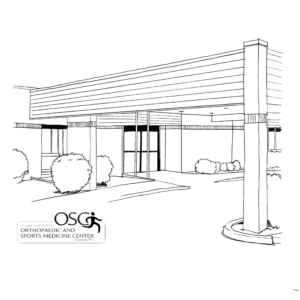High-heeled shoes can result in problems and injuries on a day-to-day basis as well as problems from continual use years down the road. High-heeled shoes change your biomechanics, i.e. the way you walk. There are both short term biomechanical changes and biomechanical changes that, when occurring repetitively, cause long term problems.
In this post, we will discuss the changes that occur while walking in high-heeled shoes, as well as the potential injury that these changes can cause while wearing heeled shoes. In Part 3 of this series, I will discuss the potential long-term issues that can occur from wearing high-heeled shoes on a regular basis.
The most common complaint of women wearing high-heeled shoes is pain in the ball of the foot, also known as your metatarsal heads. It may be slightly obvious that high-heeled shoes cause you to put more pressure on the ball of your foot due to the downward angle. The human foot was not meant to function in this manner. The pressure on the ball of the foot increases with the increasing heel height. This pressure can damage the small structures of the toes and those surrounding your metatarsal heads. It changes the pull of the tendons in the toes, stresses tissues that surround your joint and can lead to tearing of a thick fibrous tissue on the bottom of the joint called the plantar plate, which connects the toes to the foot.
Due to these stresses, inflammation and eventual degeneration of these small structures can occur. In addition, the length of your stride is reduced. This means that you must take more steps to get where you are going. More steps means more stress on the joints. All of these issues lead to “metatarsalgia,” a term that encompasses numerous pathologies that affect the ball of the foot. Most commonly these include capsulitis, plantar plate ruptures and neuromas. Look out for my future post on metatarsalgia coming soon.
Another common problem related to high heeled shoes are ankle sprains and fractures which often lead to women presenting to their local emergency rooms. The position of the foot while in a high-heeled shoe is in a plantar flexed (toes pointed down) and inverted (ankle turned in) position. If you assume this position with your foot (point your toes down and turn your ankle in), you’ll notice that this tightens the structures on the outside of your ankle. Now imagine walking in this position. With the ligaments and structures tightened with each step, the slightest turn of your ankle, something easily managed in a normal shoe, will cause a sprain or even rupture of those structures. In simple terms, you’re more likely to injure your ankle when wearing high-heels.
You don’t have to be a genius to understand that high-heeled shoes aren’t the most stable of footwear. It’s pretty obvious that while wearing high heels, your balance is severely thrown off. So compounding on the fact that the ankle and foot are already in a position at risk for injury, a person wearing heels is also more likely to be injured given the fact that center of gravity shifts while wearing high heels.
The position of the foot also causes muscles in the leg to fire in order to stabilize the foot and ankle. These muscles fire at different times than they normally would while walking in a flat shoe. In particular, two muscles called the Peroneus Brevis and Peroneus Longus, fire for a longer period of time, which causes fatigue of the muscle as well as excess strain on the tendons. This can lead to tendinitis, which can be very painful and take a long time to overcome.
Bottom line, as much as high-heeled shoes may improve your look, they can also lead to injury and cause significant pain relatively easily. Moreover, the more you wear them, the odds of experiencing an injury are greater. High-heeled shoes can also cause long-term issues. I’ll discuss these long-term issues more in an upcoming post.


